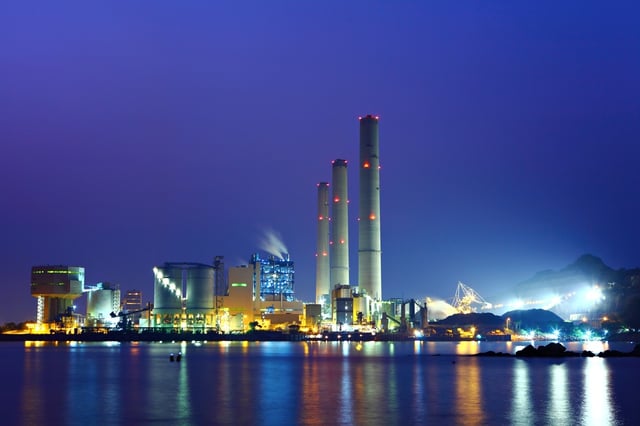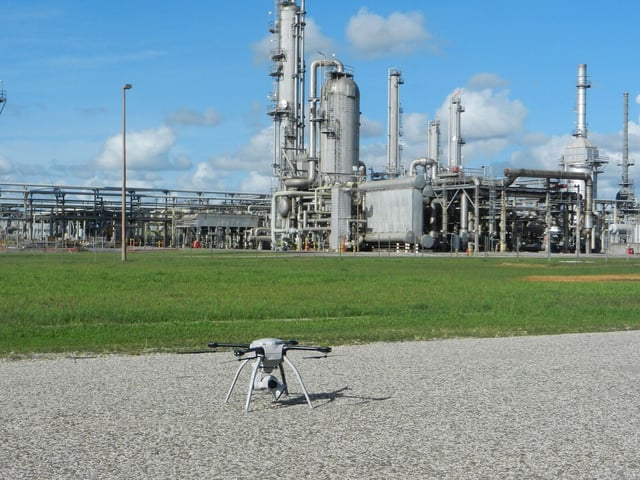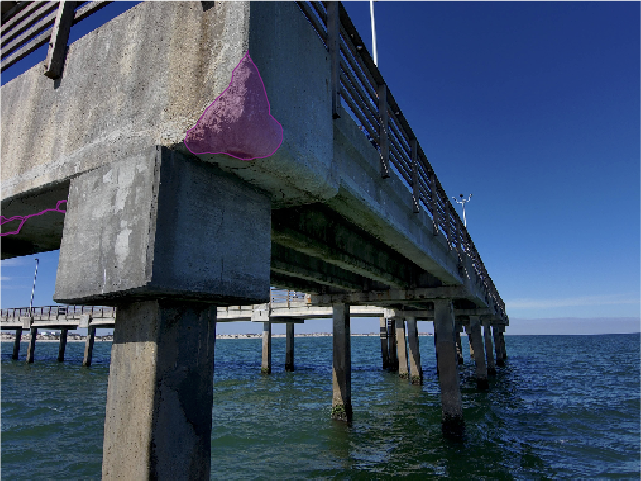To have oil equipment operating efficiently and reliably is demanding, expensive, and requires performing these tasks:
- Monitor the equipment on a continual basis to detect failures or impending failures;
- Perform regularly scheduled preventive maintenance tasks to prevent or delay equipment failure;
- Plan for downtime to replace or repair defective equipment.
To perform these tasks is expensive in terms of manpower utilization, maintenance costs, and capital expenditure.

The importance of drone-based preventive maintenance
Preventive maintenance is indispensable for proactively reducing the likelihood of failure or malfunction of oil, gas, petrochemical, and energy sector equipment. Preventive maintenance necessarily includes regular inspections to detect failure modes that could be caused by under-insulation corrosion, manufacturing defects, or natural disasters.
All industrial equipment is built upon the harmonious performance of several parts working together. For example, a pipeline that comprises several hundred pipe components will only function properly if each component functions efficiently. Because failure of one component will disable the performance of the entire assembly, the reliability of the assembly is no better than the reliability of the least reliable component.
Not surprisingly, preventive maintenance is time-consuming and expensive, especially if it involves inspections and maintenance tasks in remote or hard-to-reach areas.
Cost-effective and efficient preventive maintenance has undergone significant improvements because of drone technology. By utilizing drone inspections technology in preventive maintenance, it is easier to remotely detect equipment failures or impending failures reliably, safely and at reduced cost. Drone-based maintenance also makes it easier to respond quickly to accidents and natural disasters.

Is it possible to predict the useful lifetime of oil equipment?
Apart from improving equipment reliability by utilizing preventive maintenance, it is possible to use reliability analysis techniques to predict the lifespan for certain types of oil equipment. Reliability prediction requires knowledge of the following factors:
- The MTBF (Mean Time Between Failures) and MTTR (Mean Time To Repair). MTBF and MTTR provide useful guidelines for repairing, replacing or retiring equipment from service to guard against impending failure.
- The cost of retiring equipment prematurely.
Knowing these factors makes it easier to develop an efficient and cost-effective equipment maintenance program.
Furthermore, designing a reliability prediction and improvement program is a complex task that involves other considerations.
- It is necessary to address the root cause of failure for all components in a system to arrive at a reliable value of MTBF for each component. For example, pipelines that operate in corrosive environments will have different MTBFs than pipelines that operate in non-corrosive environments.
- It is necessary to use FTA (Fault Tree Analysis) to understand interrelations between failures modes of components in a system. FTA makes it easier to define redundancies and backups for the system and to quickly replace defective parts when needed.
Other failure analysis tools such as FMEA (Failure Modes and Effects Analysis) and RCA (Root Cause Analysis) are valuable for understanding failure modes and how to prevent them. - Analytical techniques are sometimes useful when loading and performance characteristics of oil equipment are known. For example, stresses induced on a riser during offshore drilling operations can be calculated (with safety factors applied) from dynamic and modal simulations and from finite element analyses.
Conclusions
Reliability prediction and assessment is a well-developed discipline that provides
FRACAS (Failure Reporting, Analysis, and Corrective Action Systems). Efficient use of FRACAS provides MBTF and MTTR, failure reporting, spare parts availability and consumption, and reliability growth. Reliability prediction is a dynamic process because its drivers are determined by changes in design, manufacturing, operational conditions and environment.
Drone-based preventive maintenance vastly improves upon reliability prediction and assessment because
- It provides cost savings by reducing manpower utilization,
- It can be rapidly deployed and it can perform inspections more quickly and efficiently than manual inspections,
- It can collect data in remote and difficult-to-reach areas.
Tags
Oil and Gas



.png)
